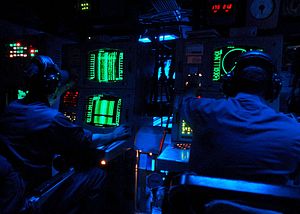During the Cold War, the U.S. Navy laid fixed networks of underwater hydrophones on the ocean floor called the “Sound Surveillance System” (SOSUS) to detect Soviet submarines transiting from their bases to patrol areas in the Atlantic and Pacific Oceans. Listening arrays placed in strategic chokepoints that those submarines would necessarily have to transit, like the waters between Greenland, Iceland, and Scotland — the so-called “GIUK Gap” — notionally let the United States know every time a Soviet submarine entered the North Atlantic, allowing the U.S. Navy to direct its own ships or submarines to track them.
Because of the system’s sensitivity, its very existence remained classified until after the Cold War. Now, in what may be the biggest upgrade to the Navy’s fixed undersea surveillance system since the Cold War, General Dynamics has been recently awarded a contract by the Office of Naval Research to develop the Deep Reliable Acoustic Path Exploitation System (DRAPES). DRAPES appears to be part of a suite of upgrades to the Navy’s submarine detection capabilities to cope with expanding fleets of advanced submarines around the world.
When the Cold War ended, the U.S. Navy no longer faced a “peer threat” to its control of the seas and many capabilities and weapons necessary for defeating advanced adversary ships and submarines were decommissioned. Research for more advanced follow-on technology was also put on hold. After operating 30 undersea surveillance sites around the world during the Cold War, the Navy has only three operational today. But as Russia, and especially China, have developed larger and more advanced submarine fleets, the U.S. Navy has had to re-learn old Cold War anti-submarine warfare competencies while developing new capabilities to tackle more challenging modern submarine technology.
While the Navy says relatively little about the advanced sub-hunting capabilities of the Integrated Undersea Surveillance System (IUSS), of which SOSUS is a part, some IUSS systems have received more public attention. The afloat Surveillance Towed Array Sensor System (SURTASS) is a small fleet of civilian-crewed ships that carry sensitive towed listening (passive) arrays that can detect submarines from great distances. These ships grabbed headlines in 2009 when the SURTASS ship USNS Impeccable was harassed by Chinese Maritime Militia while operating in the vicinity of China’s South China Sea submarine bases on Hainan Island. The SURTASS ships have also received technical upgrades since the Cold War. The introduction of the Low Frequency Active (LFA) capability, an “active” system that transmits low frequency “pings” that bounce off of submarine hulls and are then picked up by the existing passive SURTASS arrays dramatically increases their ability to detect submarines at great distances.
By contrast, little is known publicly about the SOSUS networks after the Cold War. Defense Systems reports that DRAPES, like SOSUS, will be a fixed passive listening system with a new communications capability to transmit its data. Mobile systems like SURTASS have the advantage of being able to get closer to possible contacts and follow them, but can only be in one place at a time, and must eventually return to port. Fixed systems like SOSUS, and now DRAPES, have the advantage of providing permanent coverage over target areas and then “cueing” a mobile sensor capability, like a ship or aircraft, to zero in on a submarine it detects.
One reason there were 30 IUSS sites during the Cold War is that the SOSUS systems had to be connected to collection facilities by underwater cable, requiring sites to be relatively local to the target area. But DRAPES will apparently use a new underwater communications system to transmit the acoustic data it collects to the three remaining Navy Operational Processing Facilities (NOPFs). These facilities combine data from the static SOSUS networks and SURTASS ships to provide “detection, localization, and tracking of submarines.” DRAPES’ ability to provide wide coverage from a fixed location in the ocean, apparently without the need for additional NOPF facility footprints, would be a substantial improvement over the old SOSUS network.
As China and Russia have asserted themselves anew as “pacing competitors,” as described by Undersecretary of Defense Robert Work, the U.S. Navy has taken a renewed interest in its traditional Cold War antisubmarine warfare mission. Together, DRAPES and SURTASS promise to provide a persistent, long-range ability to detect adversary submarines around the globe. Using cueing data from those platforms, improved local anti-submarine assets like the P-8 Poseidon sub hunter aircraft (which replaces the 50 year-old P-3 Orion) and surface combatants with new, improved towed sonar arrays of their own, like the Multi-Function Towed Array, can then close on a target, and track or engage it as needed.

































